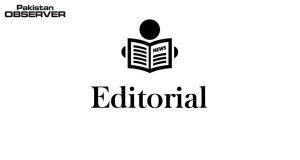THOUGH the Government is in a denial mode, a latest report by the United Nations Educational, Scientific and Cultural Organization (UNESCO) highlights woes of the people vis-à-vis access to quality education for their children.
The ‘Global Education Monitoring Report 2021-22’ reveals Pakistan has the second highest household expenditure on education of any country in the South Asian region as families are covering 57 per cent of education expenditure, with the poorest struggling to meet school expenses.
No doubt, the level of expenditure on education is indication of the resolve of the families to make investment in the future of their children but, apparently, this is done at the cost of other necessities of life, which means downgrading of their standards of living.
This awareness about the need to impart education to children might, in the long run, help transform the overall socio-economic landscape of the country as educated children would probably become productive citizens.
However, this also underlines the phenomenon of rapidly increasing educational expenses due to un-satiating greed of the private sector, unwillingness of the state to divert more resources for education and squeezing incomes of families because of unprecedented price-hike and low wages.
It is unfortunate that despite repeated claims by the successive governments, the overall expenditure on education has not increased at the desired pace and unsatisfactory standards of education in public sector institutions (coupled with slow expansion in their numbers) has left one third of the population at the mercy of private sector, a majority of which are merely minting money in the name of education.
Similarly, the issue of hefty fee and charges attracted attention of both the Government and the higher judiciary but the ground situation has not improved.
It is because of unstopped fleecing in the name of fee that the education cost represents nearly half of the income of parents living on state poverty line and 45pc of the richest in the country compared to only 11pc of the poorest go to private schools.
Contrary to the negative propaganda campaign, the report says 4.1 million students are studying in more than 31,000 deeni madaris, free religious educational institutions for the poor from pre-primary to post-secondary level.
The seminaries are playing an important role in the promotion of education with focus on religious knowledge as they cater to the 8% of the overall enrolment and 18% of enrolment in private institutions.
The overall state of affairs of education demands that federal and provincial governments should meaningfully enhance the budget for education, set up more educational institutions in the public sector, improve quality of education in public sector institutions, effectively regulate fee and support seminaries.
The introduction of a single curriculum is being hailed as the biggest achievement but the objective should be to raise the standard of public sector institutions to the level of quality private sector institutions and not to force the private sector to come to the pitiable level of the public sector.










